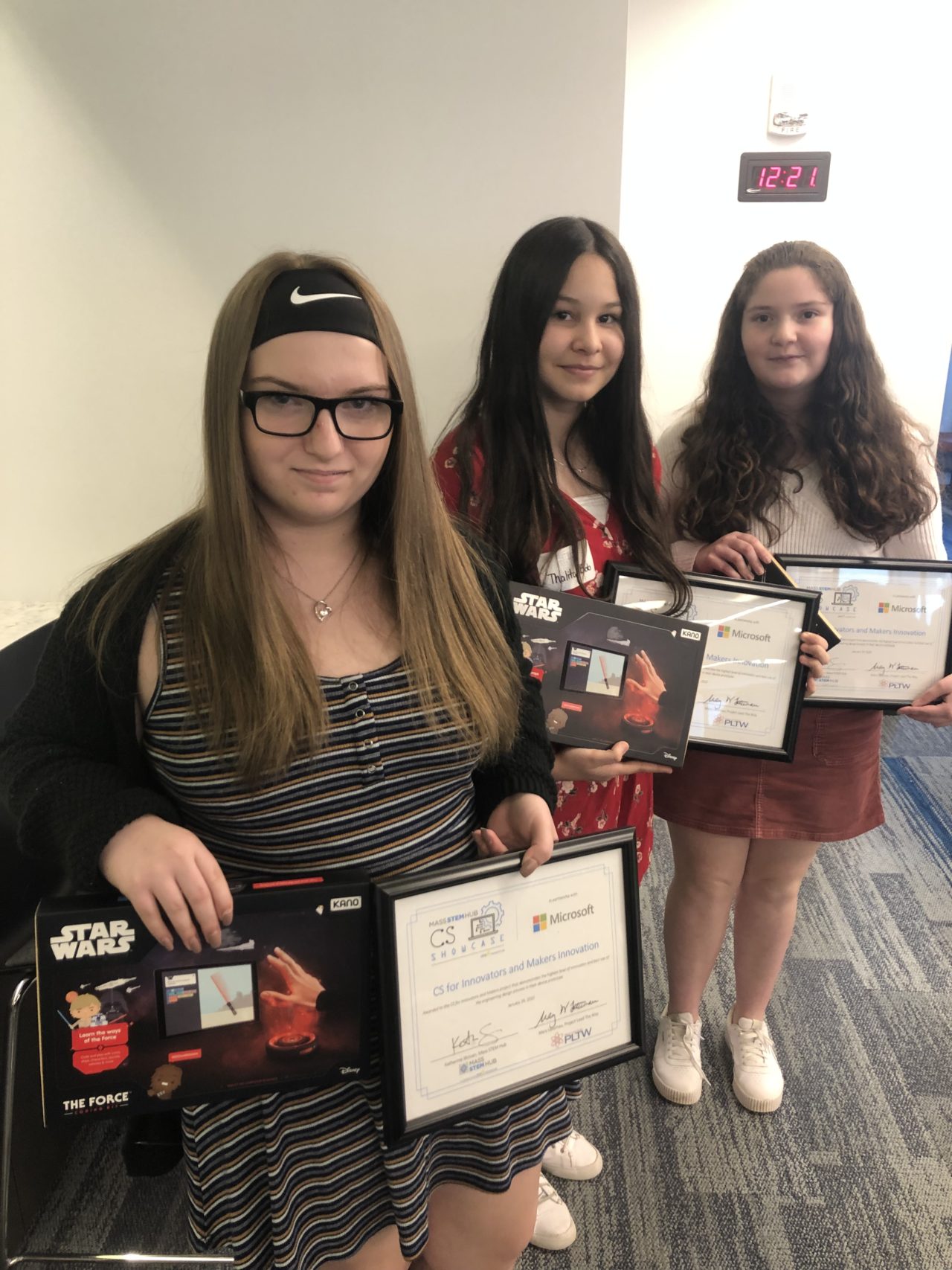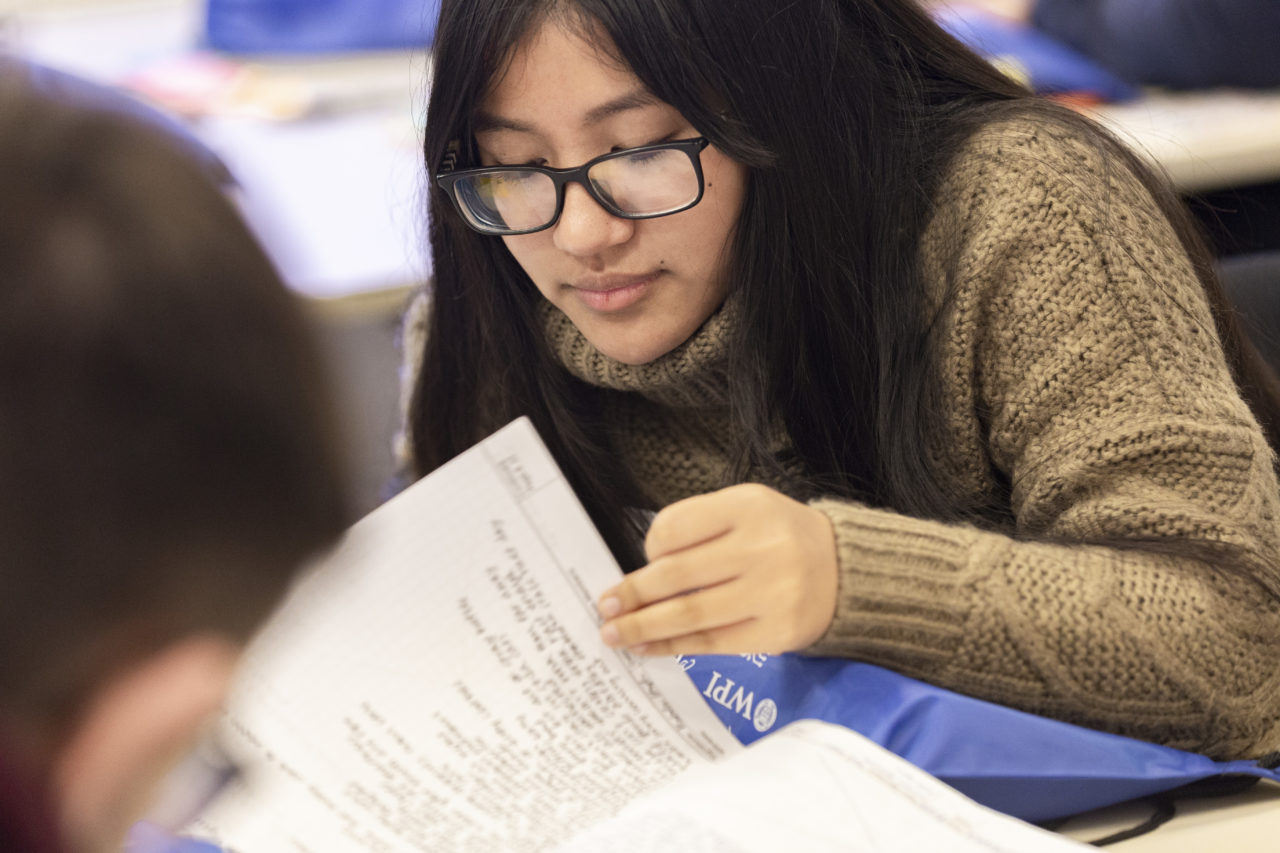
Article | The Sandwich Enterprise
STEM Students Use Lessons To Tackle Real-World Challenges
February 13, 2020
Read the article in The Sandwich Enterprise about STEM Academy’s Project Lead The Way students, including those who were recognized winners at the recent Mass STEM Hub Computer Science Showcase.
STEM Students Use Lessons To Tackle Real-World Challenges
By KATIE GOERS
A group of Sandwich residents have been creating medical prototypes, devices to assist people who work at night, and influencing curriculum in the town’s schools—but these people are not doctors, engineers, or teachers.
They are middle school students at the Sandwich STEM Academy and they are completing these projects through Project Lead The Way.
This hands-on program takes lessons in science, computers, and engineering to a new level—encouraging the students to use what they’re learning to solve real-world challenges.
There are Project Lead The Way courses offered at all of the district’s schools in Sandwich.
At STEM, it starts in 7th grade with a class called Engineering Design and Modeling. All 7th graders are required to take this class.
In the class, students this year have been tasked with creating devices that would help a “patient” of their own creation who has a handicap. The students were allowed to choose which handicap they would invent for.
Ryleigh Jordan and her team came up with a young girl they named Sophie, who had difficulty with her motor skills and therefore struggled to get dressed.
To help Sophie, Ryleigh’s team created a sensory board loaded with all the types of fasteners that someone might encounter while getting dressed—buttons, zippers, belts, and Velcro. This board would help Sophie develop the motor skills required to get herself dressed.
Ben DiGiacomo’s team created a 3-year-old client with cerebral palsy who had low muscle tone in his legs. Their goal was to prepare the child as best as possible for kindergarten by encouraging him to walk. Their device was a game board that incorporated activities such as puzzles, stacking challenges, and Play-Doh that the client would have to walk around the board to complete. For each successful challenge, the child would earn rewards, which would encourage the boy to keep walking.
Also creating a client with cerebral palsy, Tate Laurie’s team created a puzzle cube. Their client was a 6-year-old whose palsy affected her arms.
“She wants to be a regular kid and play with her brothers,” he said of the client.
The puzzle cube they invented encouraged the child to place blocks into their proper openings on the cube requiring her to use her arms and refine her motor skills to place the blocks into their precise matching opening.
Avery Cobban and her team developed a toy taco set for their client, who also had cerebral palsy. Avery said that their client’s palsy affected her arms and left leg.
The taco set features ingredients that attach with Velcro to add a little resistance to removing the items. She said that this would serve to help build arm and hand strength in the client. Smaller ingredients would also serve to refine fine motor skills.
Of all of the prototypes designed by the 7th graders, six will be chosen by their peers to be presented to representatives of Spaulding Rehabilitation Hospital in Sandwich, said teacher Ginger Lavelle.
“They’ll get professional feedback,” she said.
Two of those prototypes will then be selected for presentation at Boston Children’s Hospital.
When students move up to 8th grade, they have the option to take Computer Science for Innovators and Makers, taught by Beth Donahue. In this class, they are challenged to develop a tech device and then write the computer code to operate it.
This year, Ms. Donahue’s class took part in a computer science showcase sponsored by Mass STEM Hub in partnership with Microsoft. The challenge was to create devices that would: increase personal safety, engage through art, or dispense an object.
Teams from her class presented their projects to representatives from Microsoft at the Microsoft NERD Center in Cambridge on January 29.
Mason Rivett and his team decided to create a prototype of an automated musical cart meant to move around on a children’s ward of a hospital, brightening the days of ill children. They coded the theme to the Super Mario video games, the Avengers theme song, and the “Cantina Band” song from “Star Wars.” Their code also played light patterns appropriate to the songs being played, such as a lightsaber pattern for the “Star Wars” song.
Mason said that ideally, the completed product would play videos or allow children to play video games and be closer to 4-feet-tall in size.
Harry Glover’s team created a shoulder-mounted lamp meant to make pedestrians more visible to cars at night. The lamp could be controlled using a secondary device that would be worn on the wrist.
In order to build the device, his team used four small computer boards called Micro:Bits. Two were installed in the shoulder device and two in the armband.
While speaking to Microsoft representatives they were given some feedback on how to improve their design. Namely, that they should design an app for the shoulder lamp that could be controlled using a smart watch instead of the secondary wrist device.
Emery Philips and Simone Chiarito were also on a team that created an illumination device meant to improve pedestrian safety at night. They developed a device that was similar to a headlamp which could be worn not only on the head, but affixed elsewhere on the user using Velcro.
Winning in their category, Thalita Kennedy-Bob and her team created a pet food dish that would automatically fill when the pet needed food.
The design incorporates a sensor which can determine when the food dish is low on food based on its weight. The code that the team designed allows the sensor to trigger the food dispenser.
Thalita said that dispenser is designed to work even if the power is out so that a pet will always have access to food.
While the prototype was made using a cardboard shoe box, the real design would be made from a pet-safe plastic.
Winning their category came as a surprise, Thalita said.
The 8th graders said that the class is designed for everyone and that no one needs to know much about programming when they start.
“Even if you don’t know anything, you learn,” Simone said.
Thalita said that she has always been passionate about technology and has enjoyed seeing the class bring students from all groups—athletes, artists, and academics—in the classwork , she said.


